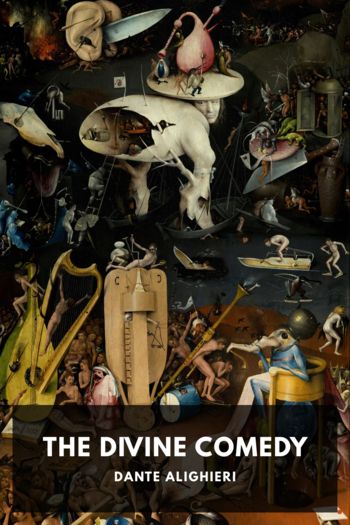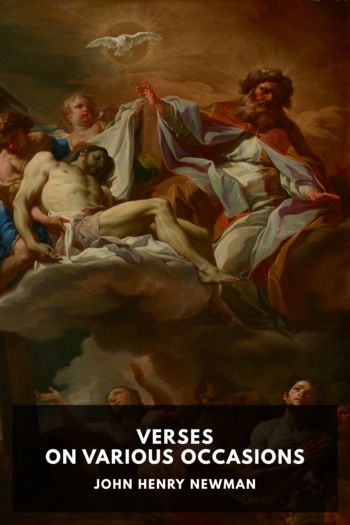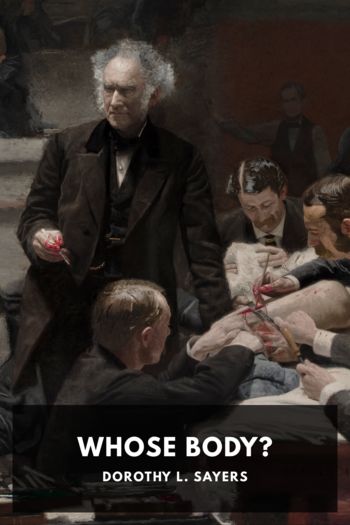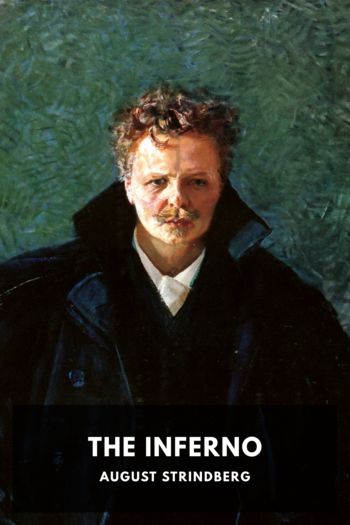The Divine Comedy, Dante Alighieri [best thriller novels of all time TXT] 📗

- Author: Dante Alighieri
Book online «The Divine Comedy, Dante Alighieri [best thriller novels of all time TXT] 📗». Author Dante Alighieri
“Once upon a time Messer Azzolino da Romano made proclamation, through his own territories and elsewhere, that he wished to do a great charity, and therefore that all the beggars, both men and women, should assemble in his meadow, on a certain day, and to each he would give a new gown, and abundance of food. The news spread among the servants on all hands. When the day of assembling came, his seneschals went among them with the gowns and the food, and made them strip naked one by one, and then clothed them with new clothes, and fed them. They asked for their old rags, but it was all in vain; for he put them into a heap and set fire to them. Afterwards he found there so much gold and silver melted, that it more than paid the expense, and then he dismissed them with his blessing. …
“To tell you how much he was feared, would be a long story, and many people know it. But I will recall how he, being one day with the Emperor on horseback, with all their people, they laid a wager as to which of them had the most beautiful sword. The Emperor drew from its sheath his own, which was wonderfully garnished with gold and precious stones. Then said Messer Azzolino: ‘It is very beautiful; but mine, without any great ornament, is far more beautiful’;—and he drew it forth. Then six hundred knights, who were with him, all drew theirs. When the Emperor beheld this cloud of swords, he said: ‘Yours is the most beautiful.’ ”
↩
Obizzo da Esti, Marquis of Ferrara. He was murdered by Azzo, “whom he thought to be his son,” says Boccaccio, “though he was not.” The Ottimo Comento remarks:—
“Many call themselves sons, and are stepsons.”
↩
Guido di Monforte, who murdered Prince Henry of England “in the bosom of God,” that is, in the church, at Viterbo. The event is thus narrated by Napier, Florentine History, I 283:—
“Another instance of this revengeful spirit occurred in the year 1271 at Viterbo, where the cardinals had assembled to elect a successor to Clement the Fourth, about whom they had been long disputing: Charles of Anjou and Philip of France, with Edward and Henry, sons of Richard, Duke of Cornwall, had repaired there, the two first to hasten the election, which they finally accomplished by the elevation of Gregory the Tenth. During these proceedings Prince Henry, while taking the sacrament in the church of San Silvestro at Viterbo, was stabbed to the heart by his own cousin, Guy de Montfort, in revenge for the Earl of Leicester’s death, although Henry was then endeavoring to procure his pardon. This sacrilegious act threw Viterbo into confusion, but Montfort had many supporters, one of whom asked him what he had done. ‘I have taken my revenge,’ said he. ‘But your father’s body was trailed!’ At this reproach, De Montfort instantly re-entered the church, walked straight to the altar, and, seizing Henry’s body by the hair, dragged it through the aisle, and left it, still bleeding, in the open street: he then retired unmolested to the castle of his father-in-law. Count Rosso of the Maremma, and there remained in security!”
“The body of the Prince,” says Barlow, Study of Dante, p. 125, “was brought to England, and interred at Hayles, in Gloucestershire, in the Abbey which his father had there built for monks of the Cistercian order; but his heart was put into a golden vase, and placed on the tomb of Edward the Confessor, in Westminster Abbey; most probably, as stated by some writers, in the hands of a statue.” ↩
Violence in all its forms was common enough in Florence in the age of Dante. ↩
Attila, the Scourge of God. Gibbon, Decline and Fall, Chap. 39, describes him thus:—
“Attila, the son of Mundzuk, deduced his noble, perhaps his regal, descent from the ancient Huns, who had formerly contended with the monarchs of China. His features, according to the observation of a Gothic historian, bore the stamp of his national origin; and the portrait of Attila exhibits the genuine deformity of a modern Calmuk; a large head, a swarthy complexion, small, deep-seated eyes, a flat nose, a few hairs in the place of a beard, broad shoulders, and a short, square body, of nervous strength, though of a disproportioned form. The haughty step and demeanor of the King of the Huns expressed the consciousness of his superiority above the rest of mankind; and he had a custom of fiercely rolling his eyes, as if he wished to enjoy the terror which he inspired.”
↩
Which Pyrrhus and which Sextus, the commentators cannot determine; but incline to Pyrrhus of Epirus, and Sextus Pompey, the corsair of the Mediterranean. ↩
Nothing more is known of these highwaymen than that the first infested the Roman seashore, and that the second was of a noble family of Florence. ↩
In this Canto is described the punishment of those who had laid violent hands on themselves or their property. ↩
“Knightes Tale,” 1977:—
“First on the wall was peinted a forest,
In which therwonneth neyther man ne best,
With knotty knarry barrein trees old
Of stubbes sharpe and hidous to behold;
In which there ran a romble and a swough
As though a storme shuld bresten every bough.”
↩
The Cecina is a small river running into the Mediterranean not many miles south of Leghorn; Corneto, a village in the Papal States, north of Civita Vecchia. The country is wild and thinly peopled, and studded with thickets, the haunts of the deer and the wild boar. This region is the fatal Maremma, thus described by Forsyth, Italy, p. 156:—
“Farther south is the Maremma, a region which, though now worse than a desert, is supposed to have been





Comments (0)